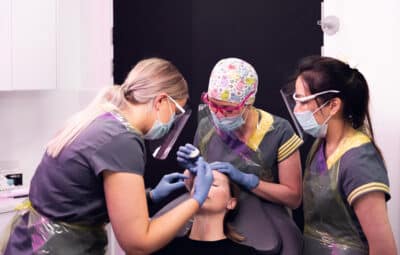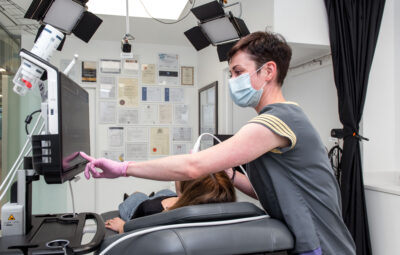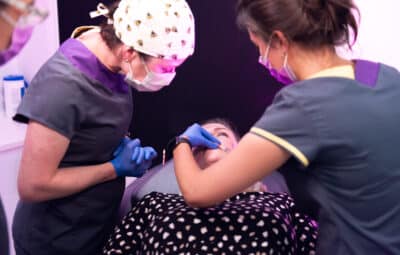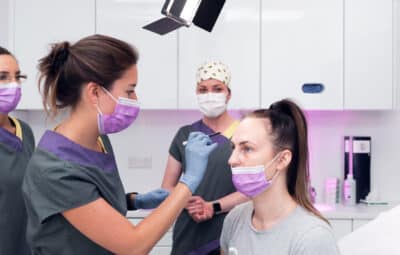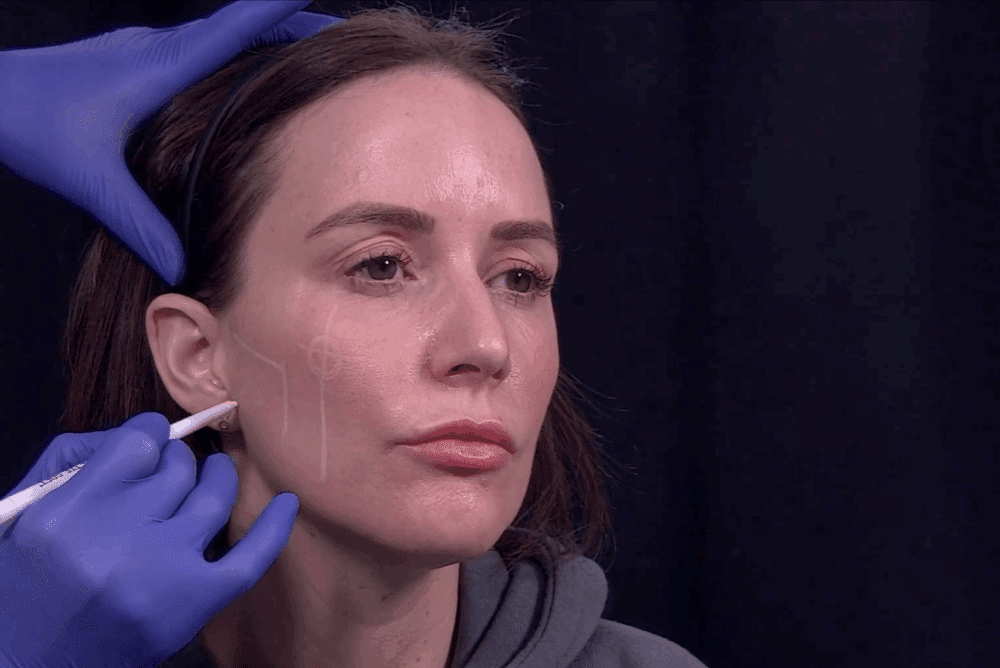
Cheek Filler Injection Points: The Ultimate Treatment Guide
20 March 2025
In this post:
- Mastering cheek filler injection points requires in-depth knowledge of facial anatomy, including skin layers, fat compartments, and vascular structures to ensure safe and effective treatment.
- Key injection points include lateral cheek, apex, lid-cheek junction, anterior cheek, and preauricular areas, with each serving a specific purpose in restoring volume and contouring the face.
- Practitioners must consider age, gender, and ethnicity when planning cheek filler treatments to create balanced, natural results.
- Using facial ultrasound enhances treatment accuracy, minimizes complications, and improves patient safety — a core part of the training at Smileworks Aesthetic Training HUB.
Cheek fillers have become one of the most requested aesthetic treatments in recent years, and for good reason. At our Smileworks Liverpool clinic, we get dozens of patients seeking cheek filler treatment every month. The mid-face is often the first area to show signs of ageing, with volume loss leading to a sunken appearance and the formation of nasolabial folds. As an aesthetic practitioner, mastering cheek filler injection points is essential for creating natural results for your patients.
At the Smileworks Aesthetic Training HUB, Dr MJ Rowland-Warmann has trained hundreds of delegates in advanced techniques for cheek augmentation, prioritising safety, precision, and predictable outcomes. This comprehensive guide will take you through the essential injection points for cheek fillers and treatment planning approaches
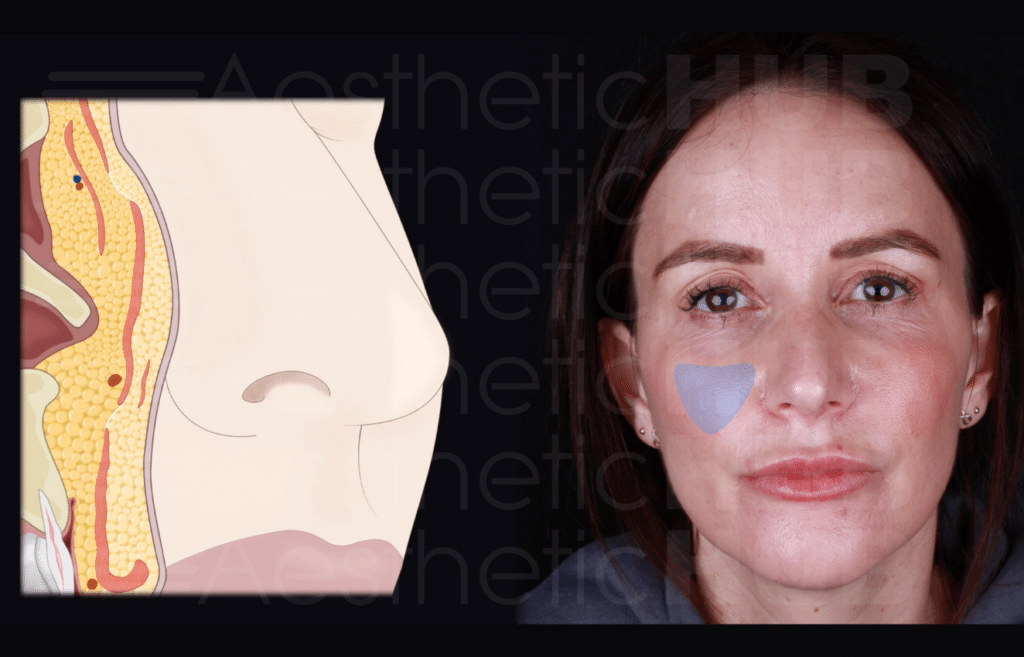
Understanding Cheek Filler Anatomy
Before placing any filler, it’s crucial to understand the complex anatomy of this area. The cheek comprises of several layers:
- The skin
- Subcutaneous fat
- Superficial musculoaponeurotic system (SMAS)
- Deep fat compartments
- Periosteum covering the bone
Key anatomical landmarks that guide injection include the zygoma (cheekbone), zygomatic arch, infraorbital rim, lateral canthus, nasolabial fold, and the preauricular region. Each of these landmarks serve as reference points for safe and effective placement.
The vascular anatomy of the cheek is particularly important to understand for avoiding complications. The region contains several critical blood vessels including:
- Transverse facial artery
- Angular artery
- Infraorbital artery
Comprehensive knowledge of these structures is not merely academic—it’s essential for safe treatment and for achieving your patient’s desired outcome.
Why Do Cheeks Sink With Age?
As we age, several changes occur in the mid-face. The fat pads of the cheek descend and atrophy, particularly in the deep medial cheek fat, while the zygoma and maxilla undergo resorption, reducing structural support. Collagen and elastin production also declines, leading to increased skin laxity.
These changes result in a downward and medial shift of the cheek contour. Patients will notice that the high points of their cheeks will start to move down. The once-prominent ogee curve flattens, and this worsens the appearance of nasolabial folds and jowls. If you choose to also treat the nasolabial folds, tread carefully. Nasolabial fold filler gone wrong is among the most common aesthetic complications injectors face.
Understanding these age-related changes helps injectors determine the appropriate placement and volume of filler to restore youthful contours.
Dr MJ’s Advanced Treatment Planning Technique
Dr MJ has developed a simple yet effective method for mapping cheek filler injection points. The above video is part of our Advanced Facial Ultrasound course. To see the full video and expertly crafted cheek filler module, enrol today!
The foundation of her injection point planning is identifying the ogee curve—an S-shaped curve that represents the ideal cheek contour. It starts at the temple, curves outward at the cheekbone, and then curves inward toward the mid-cheek.
Her mapping technique begins by drawing a line from the lateral canthus (outer corner of the eye) vertically downward. She then draws a second line from the top of the ear to the ala of the nose. The intersection of these two lines marks the point of maximum projection on the ogee curve. This is the precise location where filler placement will create the most flattering result.
For the main cheek projection, Dr MJ places the entry point lateral to the intersection along the zygoma. For addressing the cheek hollow, she places the entry point at the angle of the mandible for cannula advancement. This approach ensures consistent, predictable results for all patients.
What makes Dr MJ’s approach different from other injectors is the use of ultrasound guided injections for filler placement. Ultrasound allows you to see the underlying structures, control depth of the needle/cannula, verify filler placement, and avoid vascular structures.
Facial ultrasound technology is the single most important tool for ensuring patient safety. There is no better place to learn this skill than with Dr MJ at the HUB. More on this later.
Cheek Filler Injection Points
There are several different injection points you can use when injecting the cheek area. Which ones you use will likely vary patient to patient. As you know, no patient is the same, so a thorough consultation is essential for mapping out which injection points you’ll use.
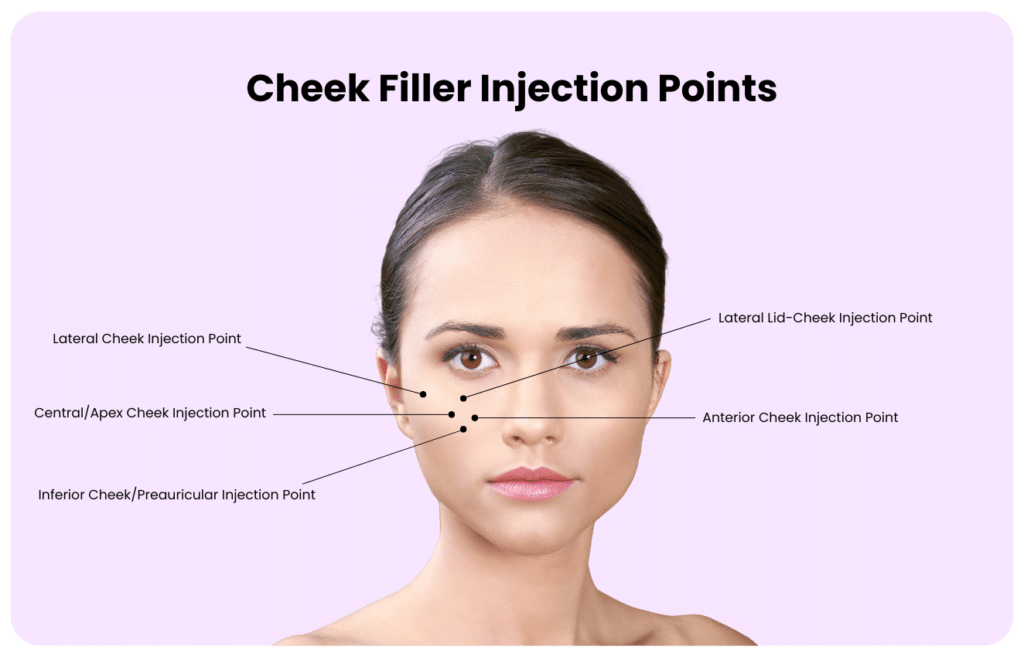
1. Lateral Cheek Injection Point
The lateral cheek injection point is located on the upper surface of the lateral zygoma. When injecting this area, the needle should be placed at a 90-degree angle to the bone, though it will appear slightly pointing upwards when in position. The injection should be made directly into the periosteum, with careful palpation using the needle to feel the curve of the underlying bone.
This injection point serves to provide lateral projection and counterbalance age-related medial volume shifts, creating a more youthful cheek contour.
2. Central/Apex Cheek Injection Point
As per Dr MJ’s mapping technique, the central or apex cheek injection point is located at the intersection of the lateral canthus-to-vertical line and the ear-to-ala line. The entry point is positioned laterally along with zygoma, with the needle or cannula advanced to the intersection point. The filler is placed in the deep fat compartment beneath the SMAS, ideally with ultrasound guidance to verify placement.
This injection point is crucial as it creates the maximum projection point on the ogee curve, restores the youthful V-shape of the face, and provides structural support for the mid-face.
3. Lateral Lid-Cheek Junction Point
The lateral lid-cheek junction point is the most superior injection point, located near the junction of the lower eyelid and cheek. This area requires special care due to the thinness of the skin and the proximity to the orbital rim. Overfilling can cause an unnatural appearance and increases risk of lumps or irregularities.
When injecting this area, practitioners should use a thinner, intermediate-grade filler and enter with the bevel facing down to touch the periosteum. A small amount of filler should be injected, followed by gentle molding to ensure even distribution.
This injection point addresses the transition between the lower eyelid and cheek, smooths the tear trough, and provides a subtle lift to the mid-face.
4. Anterior Cheek Injection Point
The anterior cheek injection point is located on the anterior face of the zygoma. When injecting this area, the needle should be placed at a 90-degree angle to ensure proper entry into the anterior face. The needle should go straight down to touch the periosteum, with a small bolus of filler delivered at this depth. Care must be taken to avoid injecting too superficially, which could result in visible lumps or irregularities..
This injection point creates anterior projection, addresses the zygomatic ligament area, and remedies cheek shadows that can form above the ligament.
5. Inferior Cheek/Preauricular Injection Point
The inferior cheek or preauricular injection point is located in the preauricular section below the zygoma. When injecting this area, a shallower angle should be used to avoid the transverse facial artery. The cannula entry point is typically placed at the angle of the mandible, with the cannula advanced to the treatment area. A linear threading technique is preferred for this area, with filler placed in the hypodermal layer.
This injection point addresses volume loss in the preauricular region, provides support to the lower cheek, and helps create a more defined jawline.
Cheek Filler Before and After

Assessing Patients for Cheek Fillers
A thorough facial assessment is a critical component of any successful cheek augmentation. Age-specific considerations play a significant role in treatment planning. Patients in their 20s and 30s are often looking for enhancement rather than the restoration older patients may be looking for.
Gender differences also play a significant role when treatment planning. Female patients have higher, more contoured cheekbones, fuller deep medial cheeks, and a defined ogee curve. On the other hand, male patients have flatter mid-faces with a less pronounced ogee curve. When treating male patients, practitioners should be careful to avoid over-feminising or over-volumising the cheeks.
There are also ethnic variations that must be taken into consideration. For example, white patients often have pronounced cheekbones but experience earlier volume loss. The focus when treating these patients is typically on restoring projections. East Asian patients often have a flatter deep medial cheek but may have full, sculpted cheekbones. The focus for these patients is on creating added definition without over-volumising.
Cheek Filler: Next Steps
The cheeks are among the most difficult areas of the face for filler injection. Mastering these injection points requires a combination of thorough anatomical knowledge, precise technique, and artistic vision. With the use of facial ultrasound, Dr MJ’s cheek filler approach keeps patient safety at the forefront.
By understanding the various injection points, their anatomical significance, and the appropriate techniques for each patient, aesthetic practitioners can achieve natural results for their patients.
For injectors seeking to perfect their cheek filler technique, comprehensive hands-on training is essential. At the Smileworks Aesthetic Training HUB, we offer specialised courses that cover facial anatomy for aesthetics, injection techniques, and complication management specifically for treatments like cheek augmentation. Our small-group training ensures personalised attention to develop your skills with confidence.
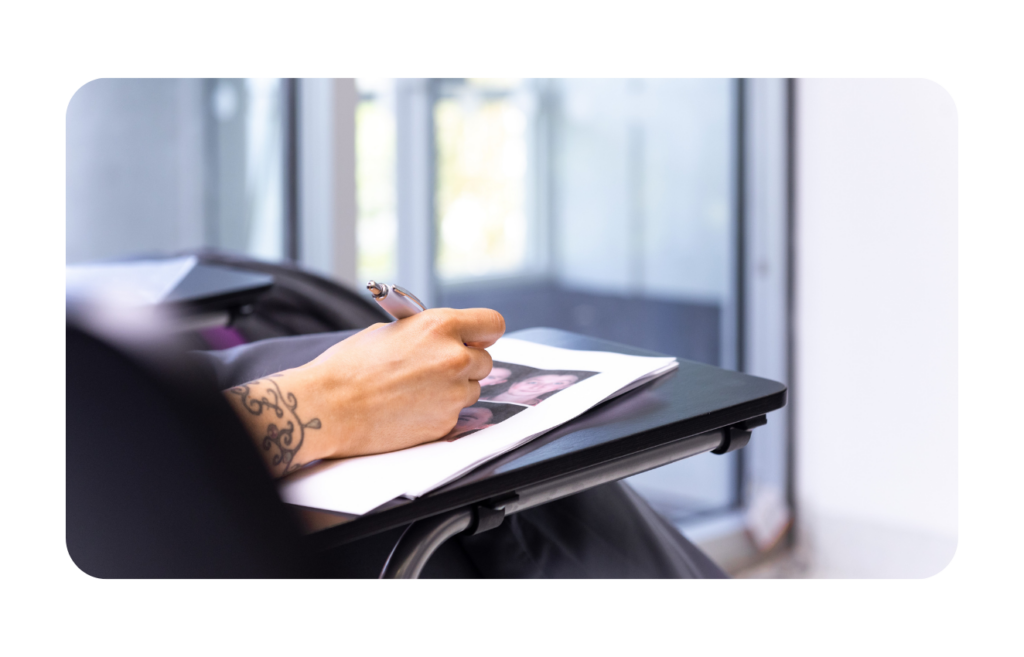
Learn From The UK’s Best Injectors
For those looking to advance their skills in cheek augmentation, there’s no better place to do so than at the Smileworks Aesthetic Training HUB. The HUB is an esteemed aesthetic training centre based in the UK. We pride ourselves on our wide range of online and hands-on courses tailored for every skill level.
The best starting point for gummy smile correction training is our world-renowned facial ultrasound courses. We offer a beginner Foundation Facial Ultrasound course that teaches you how to use and interpret ultrasound images. Our Advanced Facial Ultrasound dives deeper into how to treat with ultrasound technology, including cheek filler treatment. All of our courses are designed specifically with medical professionals like doctors, dentists, and nurses in mind. You’ll walk away with the skills and knowledge necessary to start practicing on real patients right away.
For those looking for more in-depth cheek filler training, we recommend booking a one-to-one mentoring session with Dr MJ. These sessions are 100% customisable, and you’ll receive personalised instruction based on your skill level and goals.
It’s time to embrace the prospering world of aesthetic medicine. The HUB provides you with all the right training and guidance you need to succeed. Take control of your professional journey and step into a future filled with endless potential and opportunities.
Join us at the HUB. Let’s shape the future of aesthetic medicine together and ensure safe, effective, and transformative results for every patient.
Want to try out our courses before committing? Take advantage of our free trial for a taste of what learning at the HUB is like.
Related blog posts:

